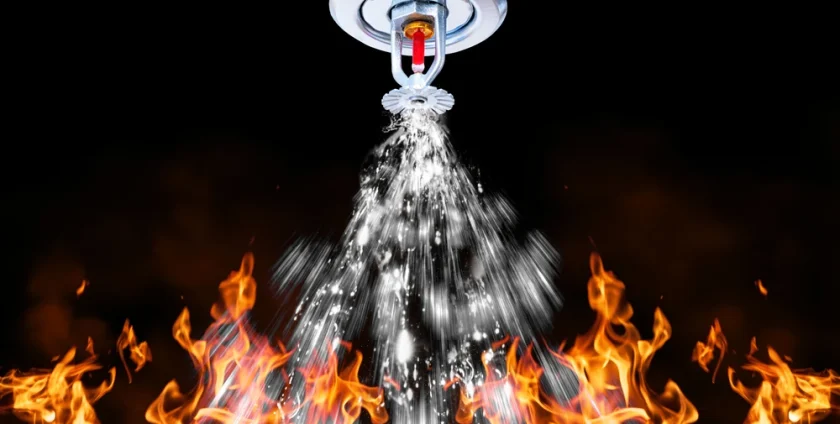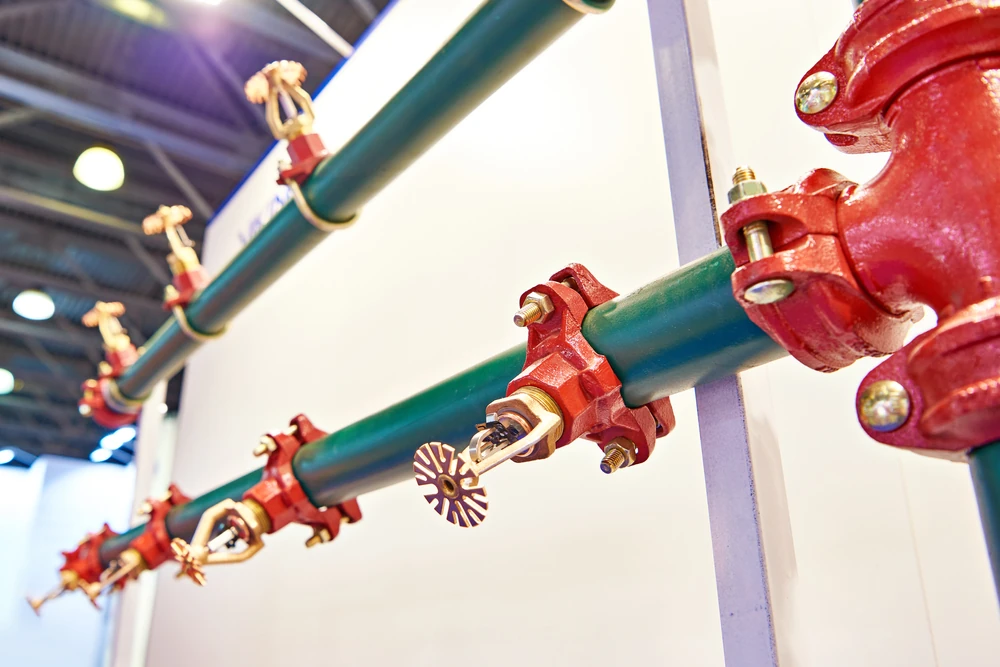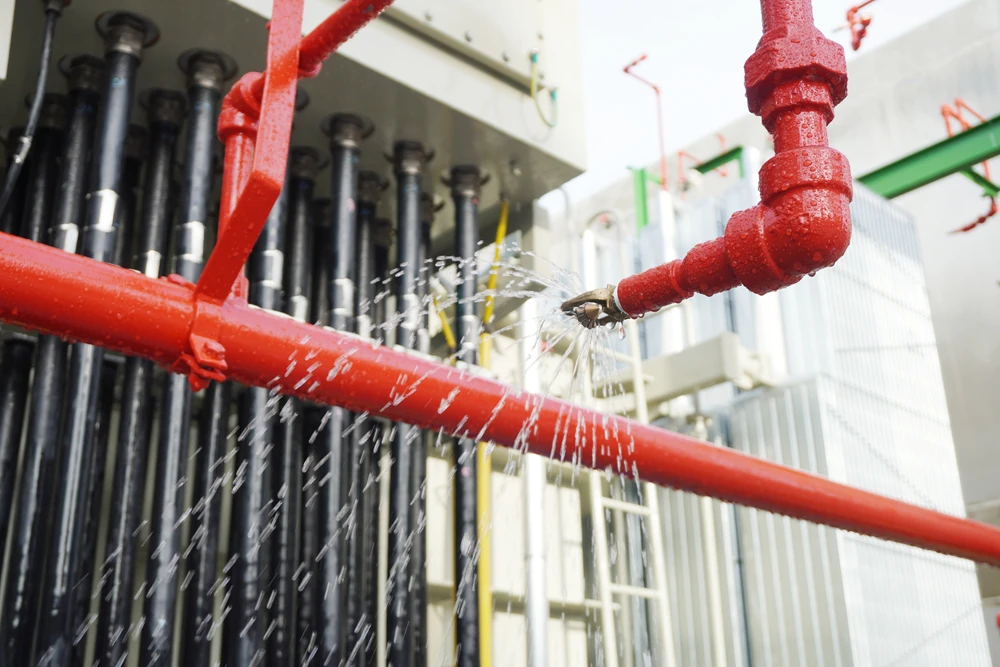
Fire sprinkler systems are among the most effective fire protection measures used in residential, commercial, and industrial buildings. They are designed to detect and suppress fires before they spread, significantly reducing property damage and saving lives. Understanding how fire sprinkler systems work can help homeowners, business owners, and facility managers make informed decisions about fire safety.
Fire Sprinkler System Components
A fire sprinkler system comprises several key components that work together to detect and extinguish fires. These include:
- Sprinkler Heads: The discharge points for water, equipped with heat-sensitive elements that trigger water flow.
- Piping System: Distributes water to the sprinkler heads, typically made from steel, copper, or CPVC.
- Water Supply: The source of water, which can be a municipal connection, a dedicated storage tank, or a fire pump.
- Control Valves: Manages the flow of water within the system, ensuring proper operation.
- Alarm System: Activates when the sprinklers are triggered, alerting occupants and emergency responders.

Types of Fire Sprinkler Systems
Different fire sprinkler systems are designed for various environments and hazards. The four main types include:
1. Wet Pipe Sprinkler System
- The most common type, where pipes are always filled with water.
- Activated when heat causes a sprinkler head to open.
- Commonly used in residential and commercial buildings.
2. Dry Pipe Sprinkler System
- Pipes contain pressurized air or nitrogen instead of water.
- When a sprinkler head is activated, the air is released, allowing water to flow.
- Ideal for unheated buildings where pipes could freeze, such as warehouses.
3. Deluge Sprinkler System
- All sprinkler heads are open and connected to a dry pipe.
- When activated, water flows through all heads simultaneously.
- Used in high-hazard areas like chemical plants and aircraft hangars.
4. Pre-Action Sprinkler System
- A combination of wet and dry pipe systems.
- Requires a two-step activation: detection of fire and sprinkler head activation.
- Used in areas sensitive to accidental water discharge, like museums and data centers.
Fire Sprinkler Activation Process
A common misconception is that fire sprinklers activate due to smoke. However, they respond to heat, specifically temperatures between 135°F to 165°F (57°C to 74°C). The process involves:
- Heat Detection: The fire’s heat causes the glass bulb or fusible link inside the sprinkler head to break.
- Water Release: This opens the valve, allowing pressurized water to flow from the pipes.
- Fire Suppression: Water sprays directly over the fire, cooling the flames and preventing further spread.
- Alarm Activation: Many systems trigger alarms to alert occupants and emergency responders.
Importantly, only individual sprinkler heads activate when needed, limiting water damage.

Water Pressure in Fire Sprinklers
Proper water pressure is crucial for effective fire suppression. The NFPA fire sprinkler standards recommend:
- Residential Systems: Minimum of 7 psi per sprinkler head.
- Commercial Systems: Typically require 20-100 psi depending on building size and hazard level.
- High-Rise Buildings: May require fire pumps to maintain adequate pressure.
Sprinkler Head Temperature Ratings
Sprinkler heads have different activation temperatures based on their intended environment. Common ratings include:
- Ordinary (135°F – 170°F): Homes, offices, and commercial buildings.
- Intermediate (175°F – 225°F): Attics, warehouses.
- High (250°F – 300°F): Industrial settings with high ambient heat.
- Extra High (325°F – 375°F): Foundries, boiler rooms.
Fire Suppression Systems vs. Fire Sprinklers
While fire sprinkler systems primarily use water, fire suppression systems use alternative agents like gas, foam, or chemicals. Key differences:
| Feature | Fire Sprinkler System | Fire Suppression System |
|---|---|---|
| Agent Used | Water | Gas, foam, or chemicals |
| Best For | General buildings | Data centers, kitchens, chemical plants |
| Activation | Heat-triggered | Smoke, heat, or manual trigger |
| Water Damage | Possible | Minimal to none |
Residential vs. Commercial Fire Sprinklers
Fire sprinkler systems vary based on the type of building they protect:
- Residential Systems: Designed for homes and apartments, using smaller pipes and lower water flow rates.
- Commercial Systems: Found in offices, malls, warehouses, and factories, with larger pipes and higher water pressure to cover bigger areas.
Compliance with NFPA Fire Sprinkler Standards
The National Fire Protection Association (NFPA) sets guidelines for fire sprinkler system installation and maintenance. Key standards include:
- NFPA 13: Standard for commercial and industrial sprinkler systems.
- NFPA 13D: Standard for residential sprinkler systems.
- NFPA 25: Inspection, testing, and maintenance requirements.
Regular inspections and maintenance ensure compliance and system reliability.
Final Thoughts
Fire sprinkler systems are a proven method of fire protection, significantly reducing fire-related fatalities and property loss. Whether for a home, office, or industrial facility, understanding how these systems work can help ensure safety and compliance. For expert guidance on fire safety solutions, consult Z3 Corporation, a trusted provider of fire protection systems in Bangladesh.
- By:Z3 Corporation
- 0 comment

Leave a Reply